Onderhoud van je ARRMA, LOSI, Traxxas bestuurbare auto!

Onderhoud van je ARRMA, LOSI, Traxxas bestuurbare auto!
Hey modelbouw vrienden, goed jullie weer hier te zien en we gaan er dit jaar fris tegen aan! Laten we dan ook gelijk eens beginnen met een goede start van het jaar door onze rc auto’s het onderhoud te geven wat ze nodig hebben! Uiteraard is deze Tips & Tricks niet alleen bedoeld voor bovenstaande merken maar kan je dit toepassen op alle bestuurbare auto’s en zelfs op mountainbikes en fietsen!
Schoonmaken YEGH!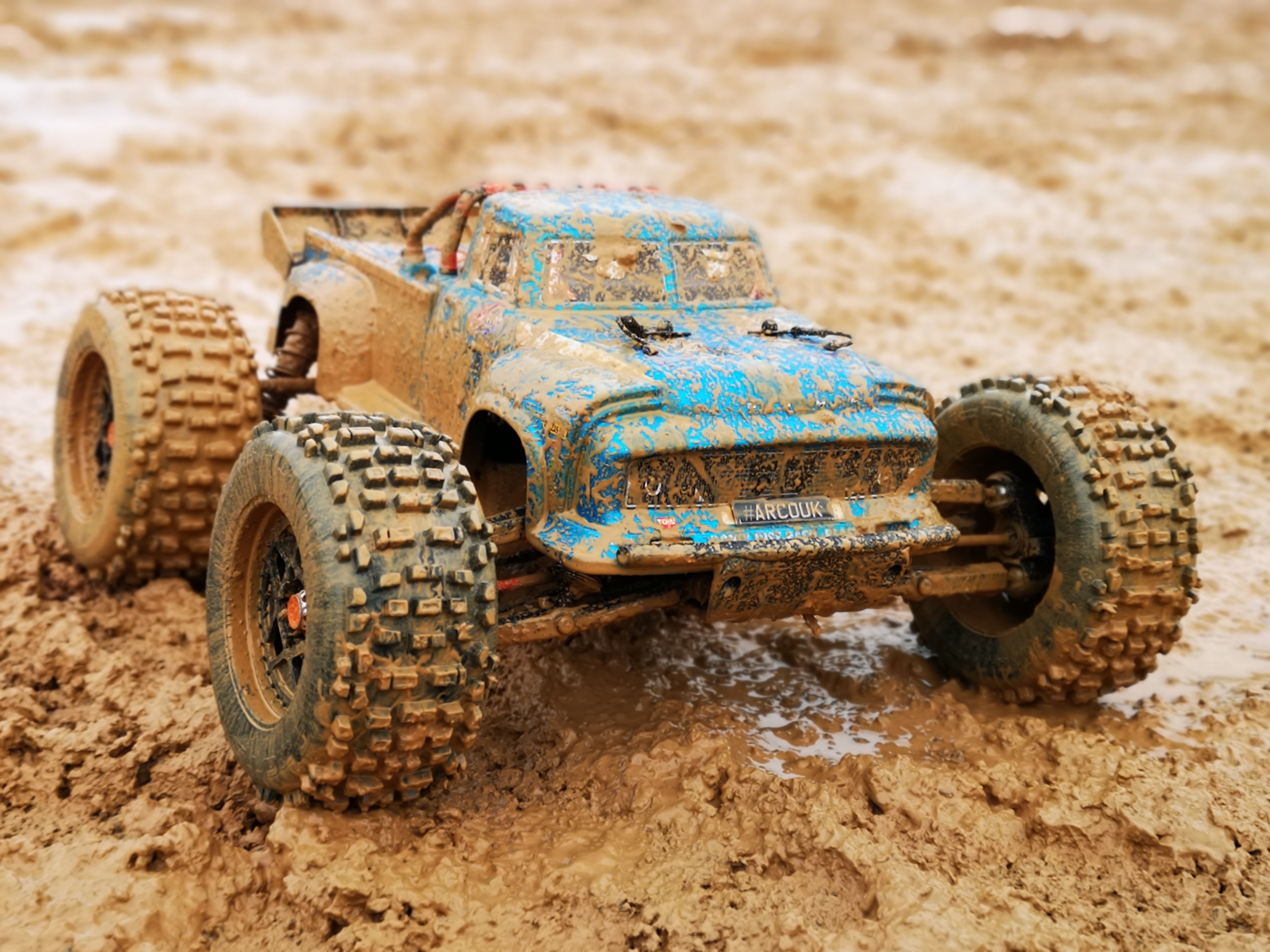
Maar wel het meest belangrijke onderhoud van je rc auto, een schone auto gaat veel langer mee dan een auto vol met vuil en grassprieten tussen de assen. Nu is schoonmaken gelukkig veel makkelijker dan het lijkt. Veel auto’s zijn tegenwoordig spatwaterdicht en daar maken we dan ook graag gebruik van. Let wel spatwaterdicht is niet hogedrukspuit waterdicht!
Bij het schoonmaken is het belangrijk dat je de wielen altijd even loshaalt van je model dit maakt het schoonmaken een stuk eenvoudiger en voorkomt ook dat er zand en water in je banden terecht komt. Rij je veel in het zand of natte omstandigheden let dan op dat bij veel rc auto’s er kleine gaten aan de binnenkant van de velgen zitten. Deze kleine gaten zorgen ervoor dat er lucht uit de band kan maar het omgekeerde gebeurt dus ook het trekt ook zand en water naar binnen. Als je al meerdere bestuurbare auto’s hebt gehad dan zal je vast wel eens een auto hebben gehad waar de wielen zo zwaar waren geworden dat de gehele auto tijdens het rijden stond te schudden. Dit kan extreme vormen aannemen wij hebben rc auto’s meegemaakt waar tot wel 1000 gram aan zand in 1 wiel zat. Dit is niet alleen slecht voor de wielen uiteindelijk staat je hele auto te schudden wat zorgt voor kapotte lagers, gebroken armen, een defecte stuurservo en nog veel meer.
Wat voor vuil hebben we mee te maken?
Het schoonmaken hangt ook veelal samen met hoe vuil de auto echt is. Heb je alleen op droog zand gereden dan is het veelal stof waar je last van hebt. Maar ga je volledig los in een waterig modderbad dan heb je een veel lastigere taak om alles weer netjes te krijgen. Bij het rijden op gras blijft de auto meestal vrij schoon, echter gaan de lange grassprieten wel overal tussen zitten wat zorgt voor extra belasting in de aandrijflijn. Heb je in de sneeuw gereden dan is het belangrijk om de auto af te drogen en te voorzien van een aantal druppels lagerolie om te voorkomen dat die heel snel gaat roesten. Ben je op het strand aan zee gaan rijden dan is direct afspoelen met schoon leidingwater aan te bevelen alsook de auto ook direct goed schoon te maken. Zoutwater tast je model heel snel aan!
Droog zand/ Stof
Dit is verreweg het makkelijkste schoon te maken, vaak is een lucht compressor een erg makkelijk hulpmiddel maar anders werkt een schilderskwast vaak ook perfect. Het vuil laat zich simpel verwijderen door er overheen te wrijven/ blazen. Na het verwijderen van het stof en zand is het wel belangrijk om de draaiende delen even te voorzien van een paar druppels lager olie zo hou je het vuil buiten en gaan je lagers veel langer mee. Voor onderhoud kun je volstaan door de zichtbare lagers een druppel olie te geven en de aandrijflijn met de hand even rond te draaien.
Nat zand/ Nat Grasveld
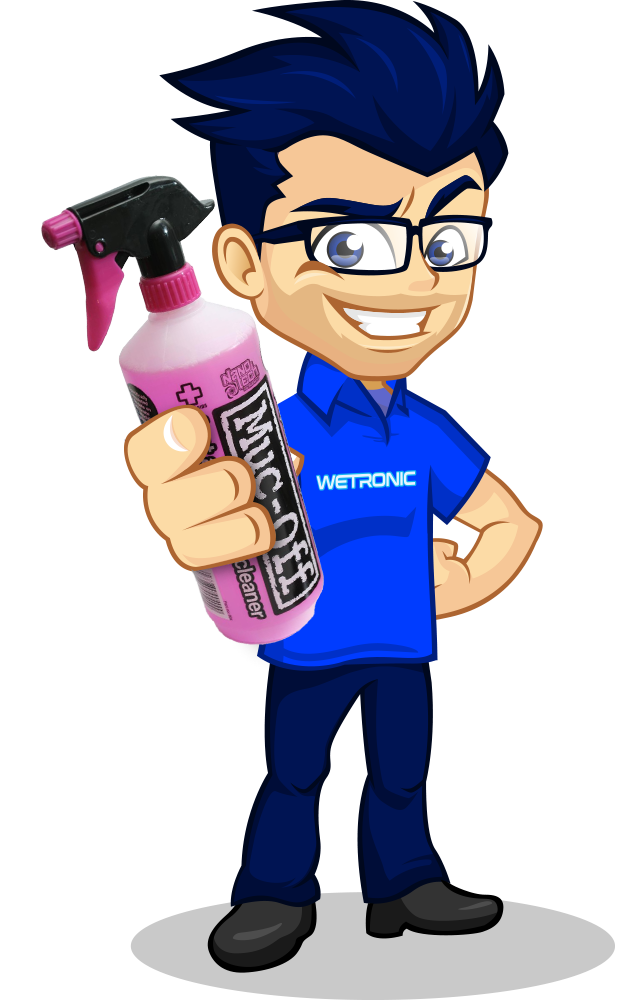
Dit kun je op twee manieren aanpakken, je kunt proberen, terwijl het zand/ modder nog nat is, om het zo goed mogelijk af te spoelen met een zachte straal van de tuinslang. Let wel op dat je auto dus echt spatwaterdicht is en richt nooit direct op de betreffende elektronica, dit kan alsnog tot schade zorgen bij je model! Als het afspoelen niet werkt is het beter om de auto een dag te laten staan, dan zal je merken dat het vaak uitgedroogd is en je veel vuil er zo met de hand kan afwrijven. Hierna kun je de auto met een stevige borstel zoals die van MUC-OFF makkelijk verder schoonmaken. Wil je je auto echt weer laten blinken dan kun je uiteraard muc-off gebruiken om zelfs het laatste beetje vuil los te krijgen van je auto. MUC-OFF is perfect om hardnekkig vuil los te weken en maakt het schoonmaken een stuk eenvoudiger. Nadat je de auto weer schoon hebt is het belangrijk om alle lagers weer te voorzien van een druppeltje olie.
Gras sprieten
Deze zijn altijd erg vervelend, ze gaan volledig om de aandrijfassen en draaiende delen zitten. Gelukkig is het verwijderen simpel veelal trek je het zo weer los. In sommige gevallen kun je ook een paar dagen wachten tot het uitgedroogd is en het nog makkelijker los komt. Let wel op dat je toch probeert zoveel mogelijk te verwijderen want nat gras zorgt vaak al snel voor roest vorming op je model door het vocht.
Vastzittend vuil/ Modderbad
Ben je echt helemaal losgegaan in de modder dan zal je merken dat dit vuil al vrij snel echt aankoekt op je model. Het verwijderen vraagt dan ook echt wel even wat ellebogenwerk. Het beste is om et beginnen met een harde afwasborstel of borstel van MUC-OFF. Deze borstels zijn speciaal gemaakt voor het schoonmaken van mountainbikes maar ook perfect voor onze eigen RC-auto’s. Door het model in te spuiten met de MUC-OFF Fast Action BikeCleaner. Nadat je je model hebt afgespoten met de tuinslang spuit je je model in met de MUC-OFF. Dit laat je 3-5 minuten intrekken en vervolgens ga je met de borstel over al het hardnekkig vuil heen. Laat het vervolgens nog 1-2 minuten even intrekken en spuit je rc auto opnieuw af met de tuinslang. Schoonmaken was nog nooit zo makkelijk! Vergeet niet om je kogellagers na afloop te voorzien van een nieuwe druppel olie!
Moet je je auto nog eerst mee naar huis nemen voordat je hem kan schoonmaken, gebruik dan een handige transporttas dat scheelt weer het schoonmaken van je kofferbak! De dirtbags van robitronic zijn betaalbaar en doen perfect wat ze moeten doen al het vuil uit je kofferbak houden!
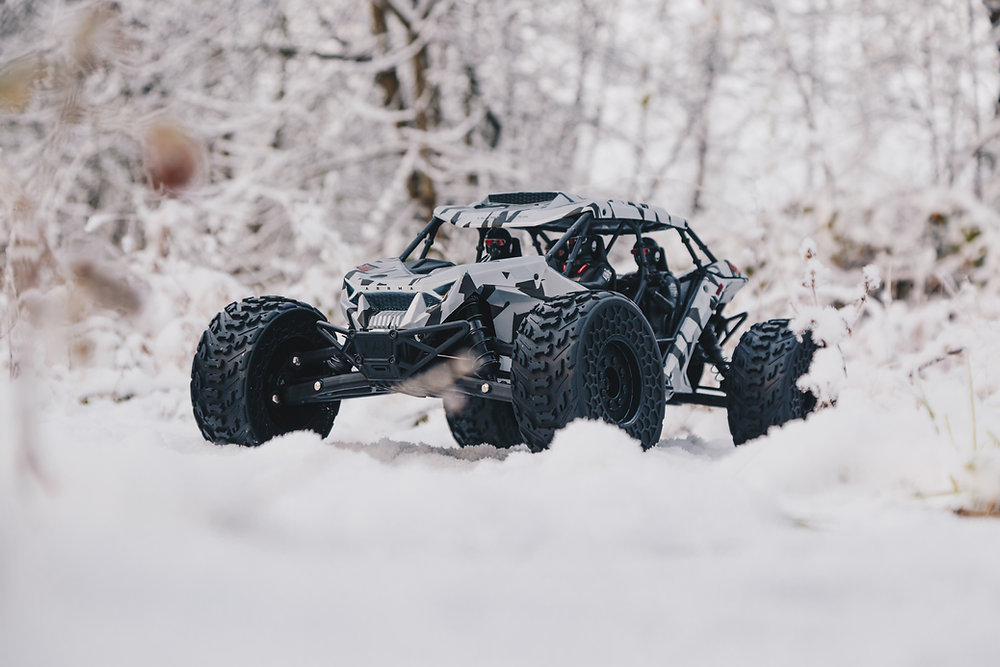 Sneeuw/ Regen of in de sloot?
Sneeuw/ Regen of in de sloot?
Nu hoor ik je denken maar sneeuw en regen is toch net water en verdampt weer? Ja zeker dat klopt maar het vervelende is dat het vaak wel vuil water is. In het geval van sneeuw probeer zoveel mogelijk sneeuw uit je model te verwijderen. Indien mogelijk spuit je model af met de tuinslang zodat het ergste vuil weg is. Vervolgens kun je de draaiende delen voorzien van een druppel lager olie en zet je je model onderste boven op een handdoek of oude kranten om te drogen. Bij voorkeur draai het model af en toe even om zodat al het water echt goed uit je model kan lopen. Om roest vorming te voorkomen is het belangrijk om je model in te spuiten met bijvoorbeeld MUC-OFF MO94. Of uiteraard met de wel bekende WD40 PTFE Spray. Let op dat je niet de reguliere WD40 gebruikt die laat een plakkerige laag achter waar vuil juist extra goed op hecht!
Tijd voor het onderhoud!
Nu je model weer helemaal schoon en fris is hebben we eigenlijk een heel groot deel van het onderhoud gelijk ook al gehad. Maar uiteraard ga ik je nog wat tips geven waar je je model echt mee laat blinken en in topconditie houdt.
Hou jij van een matglanzende bestuurbare auto welke er uit ziet als nieuw dan kun je je model inspuiten met MUC-OFF Silicon Shine dit brengt een mat-glanzende laag aan op je model net alsof die net nieuw uit de doos komt. Op deze manier lijkt het net alsof je auto gewoon elke dag nog nieuw is!
Naast het schoonmaken en het er netjes uit laten zien van het model is het verstandig om de werking van diverse essentiële onderdelen te testen. Net als een echte auto heeft jouw bestuurbare auto onderhoud nodig. Veel onderdelen zijn onderhevig aan slijtage en met tijdig vervangen van het onderdeel kun je vaak veel schade voorkomen.
Schokbrekers
Kijk altijd goed of je schokbrekers nog goed werken, ten eerste kun je meestal vrij snel zien of je schokbrekers lek zijn dan tref je de siliconenolie ook buiten de schokbreker zelf aan. Als ze lekken is het tijd om de o-ringen en afdichtingen van de schokbreker te vervangen. Ook kan het zijn dat je een keer een klapper hebt gemaakt waarbij de schokbreker stang verbogen is geraakt. Een verbogen stang zorgt voor extra veel slijtage en kan zelfs je behuizing beschadigen.
Tandwielen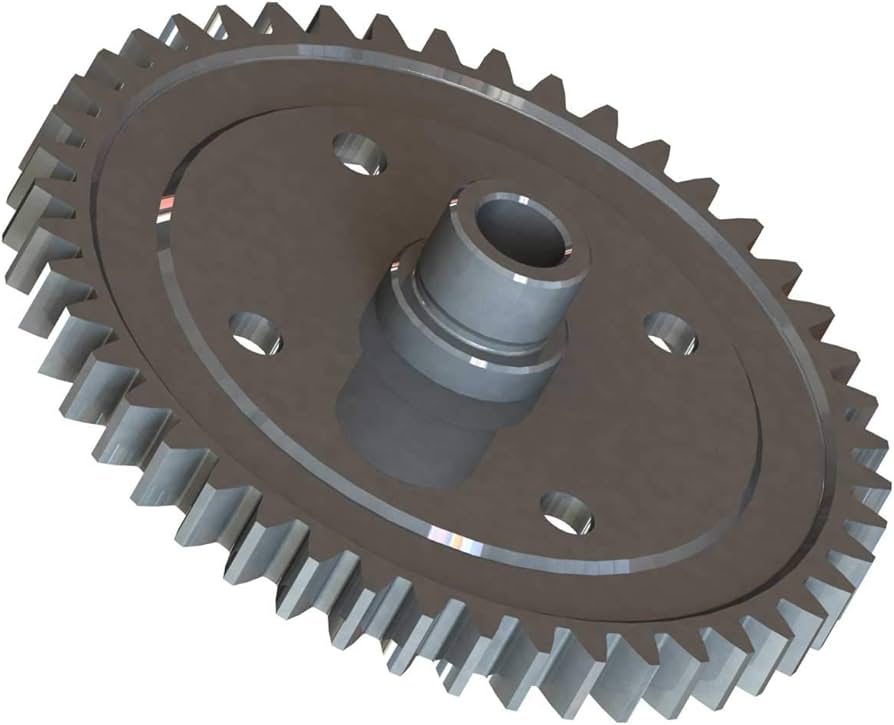
De tandwielen zijn essentieel voor de aandrijving van je tandwielen, controleer dan ook regelmatig of alles nog goed draait en er geen rare geluiden hoorbaar zijn in je model. Bij je Spur en Pinion tandwiel is het belangrijk dat de bovenkant van het tandwiel een vlakke kant heeft. Als je tandwielen er meer uitzien als haaienvinnen dan zijn ze aan het einde van hun levensduur. Als tandwielen slecht worden hoor je vaak dat er meer geluid vanaf komt. Bij differentieel tandwielen begint het vaak met het wel bekende krakende geluid van tandwielen die over elkaar heen slaan.
Kogellagers
Niks is zo gevaarlijk als een vastzittend kogellager in je model, deze wordt al snel rood heet van de weerstand en smelt vervolgens andere kunststof onderdelen weg in je model. Net als met de tandwielen herken je het vaak doordat de auto veel moeilijker rolt en de wielen zwaarder draaien. Als je dit constateert rijdt dan niet door want dit zorgt direct voor meer schade aan je model en mogelijk zelfs motor en regelaar. Het vervangen van kogellagers is voordelig en vaak snel gebeurt. Als je krijsende of schrapende geluiden hoort tijdens het rijden dan weet je dat het tijd wordt voor onderhoud aan de kogellagers.
Draagarmen/ stangen
De draagarmen zelf zijn niet slijt gevoelig maar wel zijn ze gevoelig voor schade zoals diepe krassen of zelfs breuken in de armen. Zeker met de koude buiten temperaturen wordt het kunststof harder en daardoor kwetsbaarder voor breuk. Met een snelle inspectie weet je zeker dat je bij de volgende rit niet voor verrassingen komt te staan.
Als je je draagarmen controleert kijk dan gelijk even naar je hinge pins en alle koppelstangen. De koppelstangen zorgen voor een stabiel rijgedrag en zeker bij de goedkopere auto’s worden hier kunststof kogels gebruikt welke snel zullen slijten. Als de speling te groot is kan dit zorgen voor diverse problemen maar vooral de stabiliteit van de auto wordt een stuk slechter hierdoor.
Oops! Veel gemaakte fouten
Onderhoud en schoonmaken van je RC-auto is niet moeilijk en iedereen kan dit, wel is het belangrijk om dit goed te doen. Neem dan ook vooral de tijd hiervoor want het bespaar je veel frustratie en irritatie. Ben je nog nieuw in de hobby gebruik dan vooral de tekeningen die de fabrikant heeft meegeleverd met je auto hier zie je snel hoe je auto precies in elkaar zit en dus ook weer uit elkaar moet. Ook als je een onderdeel nodig hebt kun je met dit nummer gelijk een nieuw onderdeel bestellen en weet je zeker dat dit het goede onderdeel voor jouw auto is. Uiteraard hebben wij per model ook de onderdelen gesorteerd maar soms zijn de verschillen tussen de modellen maar erg klein.
Doorrijden met een vastzittende kogellager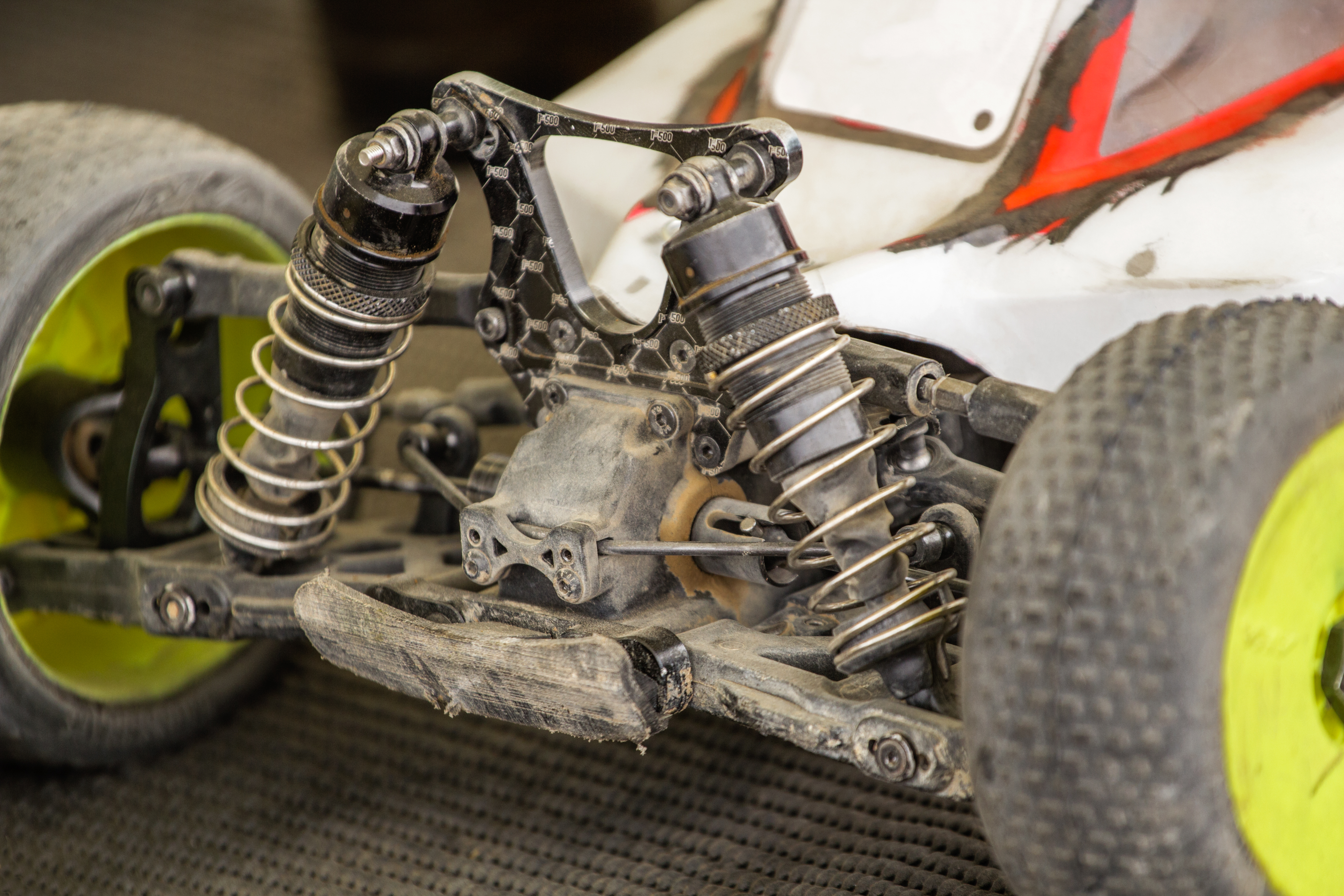
We zien dit toch met regelmaat langskomen in onze winkel, het lager zelf is vaak het probleem niet meer die is toch al volledig overleden. Maar het gevolg is vaak dat het onderdeel waar het lager in zit ook onnodig beschadigd raakt. Bij sommige modellen zijn dit hele grote stukken van het chassis waardoor het vervangen ineens veel werk is en ook erg kostbaar blijkt te zijn. Rij dus nooit door met lagers welke niet meer goed werken!
Verkeerde schoonmaakmiddelen
Oma weet raad! Maar niet altijd, we zien de gekste middelen voorbijkomen om een bestuurbare auto schoon te maken. WD-40 lijkt bijvoorbeeld perfect te werken maar het laat een klevende substantie achter en je auto daarna schoonmaken is echt ineens veel meer werk. Net als allerlei soorten olie welke op de markt zijn. Het is belangrijk dat je auto na het schoonmaken niet plakkerig is want zand vindt dat supertof maar jij na het rijden niet!
Versleten tandwielen
Vaak weten we allemaal wel dat onze tandwielen niet heel best meer zijn maar toch nog net die ene keer en dan gaat het mis, de tanden breken af of zelfs erger het slaat in één keer helemaal vast in het differentieel. De tandwielen zelf zijn goedkoop maar het metaalgrijs komt overal en als de auto in één keer vastslaat kan dit zelfs je motor en regelaar beschadigen. Zorg dus voor een goed onderhouden auto want dit brengt veel meer plezier aan je hobby!
Oops net die éne paal stond in de weg!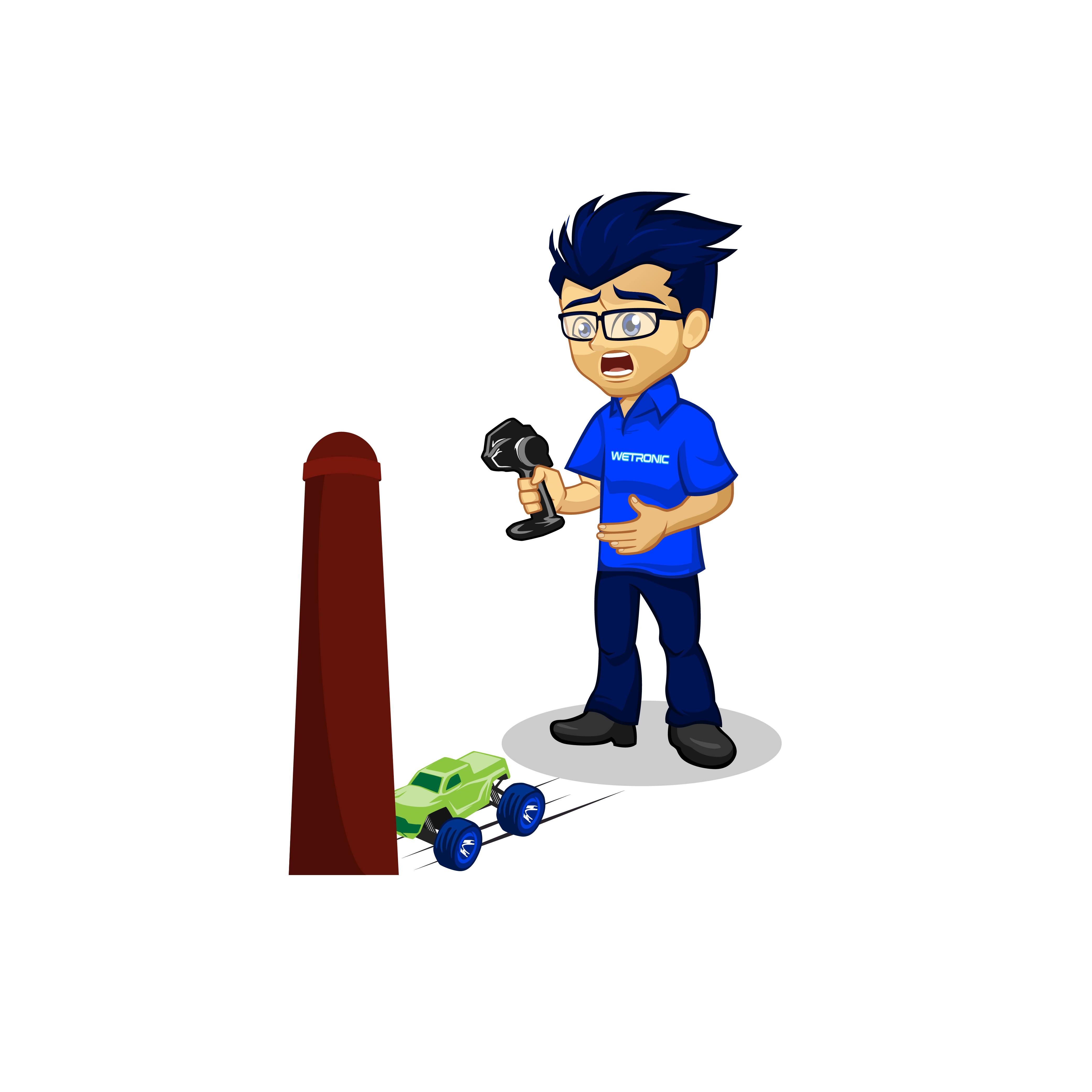
Als we een nieuwe auto verkopen aan de klant zeggen wij altijd “Pas op voor overstekende paaltjes en stoepranden”. Steevast zijn dit de objecten die verreweg de grootste schade kunnen maken aan jouw bestuurbare auto. Hoe goed je ook oplet als ze er staan ga je ze een keer tegenkomen tijdens het rijden. Beter is om een locatie te zoeken waar je lekker de ruimte hebt en deze vervelende objecten niet voorkomen.
De auto weg leggen met de accu’s nog aangesloten of volledig leeg
Misschien wel de belangrijkste tip van dit hele blog! Leg nooit maar dan ook nooit je accu’s weg als je ze volledig leeg hebt gereden. Zeker de moderne LiPo accu’s kunnen slecht tegen het volledig ontladen. Heb je gereden haal de accu’s dan altijd los want zelfs als je auto uit staat gebruikt die nog een klein beetje stroom uit de accu. Als je thuiskomt is het verstandig om de accu’s altijd iets op te laden al is het maar even 10-15 minuten dit zorgt ervoor dat er tenminste een goede basis spanning aanwezig is. Ga je de auto enkele weken/ maanden niet gebruiken zet de accu’s dan in storage mode om te zorgen dat ze zo lang mogelijk mee gaan en je kan blijven genieten van de hobby zodra het weer beter weer wordt buiten.
Gr. Arcee
